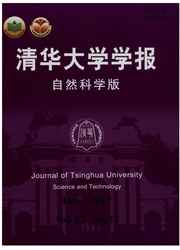

 中文摘要:
中文摘要:
在模型检验研究中,针对离散误差的后验误差估计扮演着重要角色。在工程有限元分析中,有关问题解答场的标量性质的目标输出量是后验误差分析中人们所关注的。在已有的面向目标误差估计技术中,有2种方法能够提供目标量误差的严格上下界,即本构关系误差法与凸目标函数优化法。该文简要总结了这2种方法,并从计算列式的一致性和基本原理的等价性2个层面论证了2种方法的等价性,给出了2种严格界方法的本质均为余能原理的论断。对2种方法等价性的探讨有助于结合2种表达格式的优势,并拓展到更复杂的问题中,形成简明有效的计算列式。
 英文摘要:
英文摘要:
For model verification which is mainly focused on the control of discretization errors of numerical results,aposteriori error estimation plays an important role in various numerical tools such as the finite element method.The outputs of interest are usually converted into integral functionals over the problem domain for a posteriori error analysis. Among the available techniques for goal-oriented error estimation,only two approaches,the constitutive relation error estimation and the constrained optimization method with convex objective functions,have been claimed to be able to offer guaranteed strict upper and lower bounds for the errors in quantities of interest.The two approaches are briefly reviewed and the equivalence of their formulation and principle is given.Both approaches are shown to be essentially based on the complementary energy theorem. The equivalence of the two approaches is instrumental in simplification of error estimation and extension of applications into more complex problems.
 同期刊论文项目
同期刊论文项目
 同项目期刊论文
同项目期刊论文
 期刊信息
期刊信息
